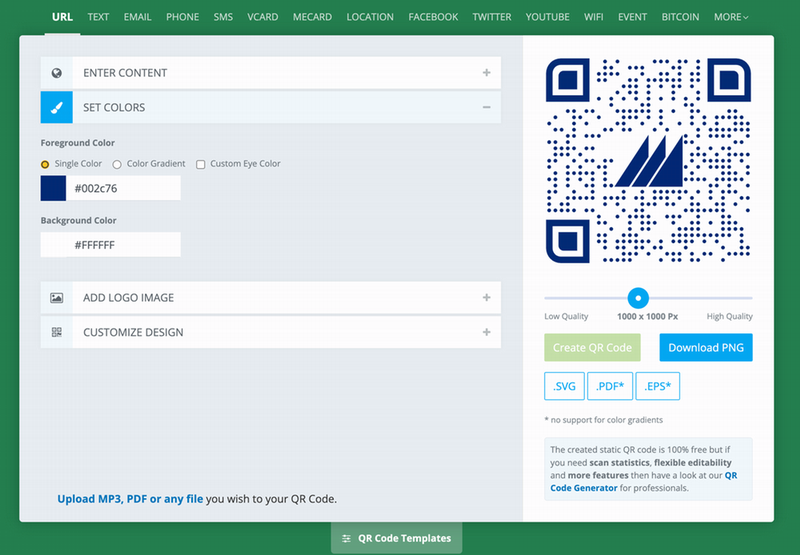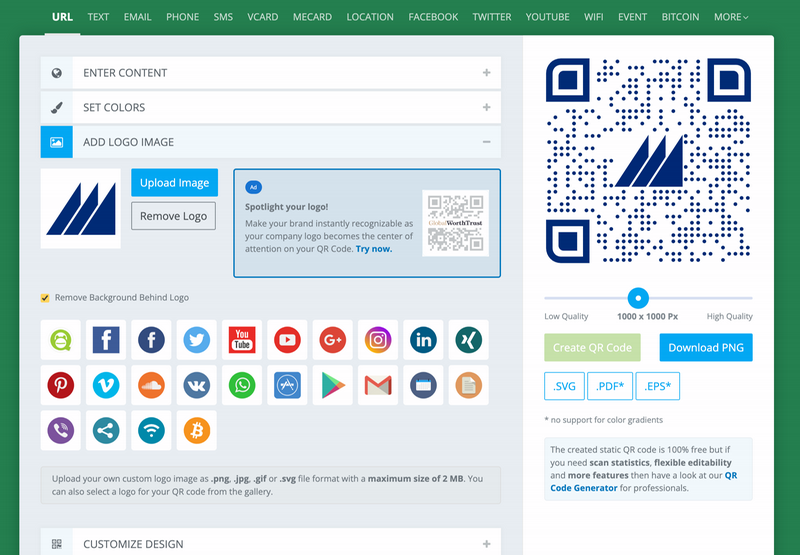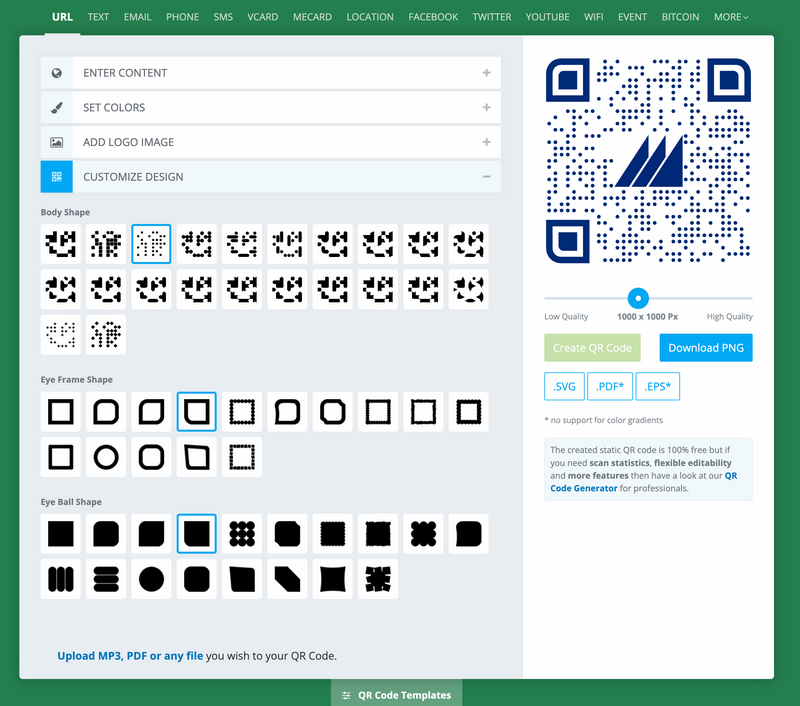
Our Style
At Christopher Newport University, every word we share shapes how the world sees us. The Office of Communications and Public Relations (OCPR) champions a clear, consistent, and professional writing style that celebrates the excellence of our University and strengthens our public voice.
Grounded in Associated Press (AP) writing, this guide reflects industry best practices while establishing specific standards unique to CNU, including several instances where the University departs from AP style. In those cases, the CNU Style Guide is the final authority.
These guidelines are designed for promotional and official University communications, not academic writing. Use them to ensure every message we create is polished, cohesive, and true to who we are as Captains.
Our Name
Use "Christopher Newport University" on first reference and in a prominent place in the publication. "Christopher Newport" or "the University" is acceptable in subsequent references. Limited use of "CNU" is permitted.
CNU Style
Use standard abbreviations without explanation when they are widely recognized (a.m., p.m., Dr.). For other abbreviations or acronyms, spell out the full term on first use and place the abbreviation in parentheses - Christopher Newport University (CNU), not C.N.U.
After the first mention, use the abbreviation alone. In longer documents, it can be helpful to repeat the full name occasionally to remind readers what the abbreviation stands for.
Some abbreviations are so common that the full form is rarely known or needed (IT, URL). Use your best judgment in these cases, and always stay consistent.
Correct:
- Christopher Newport University (CNU) is…
- John Smith, MD, will…
Incorrect:
- C.N.U. (no periods in abbreviations)
- Use acronyms without first spelling them out (unless widely recognized).
Degrees are earned or held, not “received.”
Capitalize the proper names of degrees when spelled out (She earned a Bachelor of Arts in History).
Do not use periods in degree abbreviations (BA, MS, PhD). When listing a degree after a person’s name, add a comma before the abbreviation (John Doe, MD).
When listing faculty credentials, do not include the specific campus where the degree was earned unless it is not the university’s main campus (University of North Carolina, not University of North Carolina at Chapel Hill).
Correct
- She earned a Bachelor of Arts in history.
- John Doe, PhD
- University of North Carolina
- Sarah earned a bachelors degree.
Incorrect:
- She received a bachelor of arts in history. (degrees are earned, not received and the degree name should be capitalized)
- John Doe, Ph.D. (no periods)
Refer to graduates collectively as Christopher Newport alumni. Do not use CNC or CNU before the word alumni. When mentioning a graduate, include their class year in parentheses with a backward apostrophe (’).
- Alumna – one female graduate
- Alumnae – plural, female graduates
- Alumnus – one male graduate
- Alumni – plural, male graduates or a group of male and female graduates together
Correct:
- John Smith (’22) won the Alumni Achievement Award.
- Mary White ’84 is a proud supporter of CNU.
Incorrect:
- CNU alumni (omit CNU before alumni)
- John Smith (‘22) (use correct backward apostrophe)
Consistent formatting of building names, addresses, and room numbers helps ensure clarity in all communications, whether print or digital.
- Always use the building’s official name as listed in the CNU Facilities directory
- Capitalize the full building name.
- Spell out “Room” in all formal communications; do not abbreviate as “Rm.”
- Use a comma between the building name and room number.
- For addresses, follow standard U.S. Postal Service format for external mail.
- For campus location references (internal communications, event promotions), list in this order:
Building Name, Room Number (e.g., Freeman Center, Room 201)
Do
- Use the full, official building name in all first mentions.
- Follow AP Style for state abbreviations in mailing addresses.
- Include the ZIP code in all external mailing addresses.
- Use consistent formatting across all platforms.
Do Not
- Abbreviate building names or use informal nicknames in official communications.
- Use “Rm.” or the pound sign (#) for room numbers.
- Omit commas between building names and room numbers.
- Use outdated building names.
Correct:
- Freeman Center, Room 201
- David Student Union, Room 250
- 1 Avenue of the Arts, Newport News, VA 23606
Incorrect:
- Freeman Ctr., Rm. 201 (do not abbreviate Room)
- room 201 Freeman Center (the building should be first and room capitalized)
- 1 Ave of the Arts, Newport News, Va. 23606 (Both letters in abbreviations should be capitalized)
Capitalize only the first word of a sentence and proper nouns, including names of courses, months, and days of the week. Capitalize official names of boards, buildings, centers, classes, clubs, conferences, departments, giving societies, offices, programs, and similar entities. When referring to these in a general sense, use lowercase.
Do not capitalize the names of subjects unless they are part of an official title.
Correct:
- The Department of Music, Theatre, and Dance offers several ensembles.
- The Center for American Studies is hosting a lecture.
- The center will release its findings next week.
- The Class of 2030 will begin classes in August.
- He majored in accounting.
Incorrect:
- The Music, Theatre, and Dance Department offers several ensembles. (capitalize only when using the official name)
- He majored in Accounting. (no capitalization for general subjects)
- The Center For American Studies (capitalize only the official words in the title)
Capitalize University when it is used as a proper noun referring specifically to Christopher Newport University. Lowercase university when used in a general sense or to refer to institutions other than CNU in non-formal contexts.
Correct:
- Christopher Newport University is Virginia’s leader in student engagement. The University offers more than 90 areas of study.
- The University received a record number of applications last academic year.
Lowercase "university"
Lowercase university when it is used in a generic sense or when referring to a university that is not the primary subject of the sentence. It should also be lowercase when used as a common noun rather than as a proper noun referring specifically to Christopher Newport University.
Correct:
- If you want a university that embraces a multicultural student body, you have many options in Virginia.
- She applied to several universities in the state before choosing CNU.
Always use Captains with an S when referring to Christopher Newport students, alumni, athletes, or the community. Do not use an apostrophe unless showing possession (the Captains’ victory). Never use the singular form Captain unless referring to one individual in a specific context.
Correct:
- Christopher Newport Captains
- The Captains won the championship.
- The Captains’ spirit is unmatched. (possessive)
Incorrect:
- Christopher Newport Captain (unless referring to one person)
- Captain’s victory (incorrect use unless singular possessive)
When referring to undergraduates, identify their class status based on the number of credits earned:
- Freshman: 0–29 credits
- Sophomore: 30–59 credits
- Junior: 60–89 credits
- Senior: 90+ credits
Always lowercase class status in running text, even when it appears before a name.
Correct:
- Jane Doe, a junior
- sophomore Todd Jones
Incorrect:
- Jane Doe, a Junior (capitalize only if starting a sentence)
- Sophomore Todd Jones (capitalize only if starting a sentence)
Christopher Newport uses the Oxford comma, also known as the serial comma, in all University communications. This means placing a comma before the conjunction in a list of three or more items. Using the Oxford comma ensures clarity and consistency in all written materials.
This differs from Associated Press (AP) style, which typically omits the final comma in a simple series. However, using the Oxford comma is the University’s standard, as it ensures clarity and consistency in all written materials.
Correct
- The University offers programs in business, science, and the arts.
Incorrect:
- The University offers programs in business, science and the arts. (A comma should be included after science)
Comma Rules
Quotation Marks
Always place commas inside closing quotation marks.
Example: She said, “Welcome to CNU,” and smiled.
Numbers
Use commas in numbers 1,000 and higher (3,400; 500,000), except in room numbers or test scores.
Example: Forbes 3012; 1250 on the SAT.
Suffixes
Do not put a comma before Jr., Sr., or III.
Example: James P. Gordon, Esq. John Smith Jr.
Exceptions: Use a comma in formal names when it is part of the official style, such as Lewis Archer McMurran, Jr. or Joseph W. Luter, III.
Esq.
In formal display copy or letters, place a comma before “Esq.”
Example: James P. Gordon, Esq.
Newspapers and Magazines | Books | Journals | Plays, tv shows, etc. | Operas and other works of art | Articles | Some instrumental works
Newspapers and Magazines
Capitalize titles - do not use quotes or italics
Correct:
- The New York Times
- Time magazine
- Daily Press
Incorrect
- The New York Times (do not use italics)
- “Time Magazine” (do not use quotation marks and do not captalize Magazine unless it is part of the title)
- the daily press (use proper capitalization)
Books
Put titles in quotation marks
Correct
- “To Kill a Mockingbird”
- “The Great Gatsby”
Incorrect:
- To Kill a Mockingbird (do not italicize)
- The Great Gatsby (do not use quotes)
Journals
Put journal titles in italics. References to articles within a journal should be in quotation marks.
Correct:
- I read it in The Journal of Higher Education.
- “Student Success in Liberal Arts Colleges” in The Journal of Higher Education
Incorrect:
- I read it in “The Journal of Higher Education.” (should be italicized and not in quotation marks)
- Student Success in Liberal Arts Colleges in The Journal of Higher Education (The article title should be in quotation marks and the journal title should be italicized)
Plays, films, television shows, and radio programs
Put titles in quotation marks
Correct:
- “Hamlet”
- “Casablanca”
- “The Crown”
- “This American Life”
Incorrect:
- Hamlet (should be in quotation marks)
- “The Crown” (do not italicize titles in the quotation marks)
Operas and other long musical works, as well as paintings, drawings, statues, and other works of art
Put titles in quotation marks
Correct:
- “La Traviata”
- “The Nutcracker”
- “Starry Night”
- “David”
Incorrect:
- The Nutcracker (missing quotation marks)
- Starry Night (use quotation marks, not italics)
Articles in journals, magazines, and newspapers; poems; and songs
Put titles in quotation marks
Correct:
- “The College Experience in 2025”
- “The Road Not Taken”
- “Imagine”
Incorrect:
- The College Experience in 2025 (articles use quotation marks)
- The Road Not Taken (poems use quotation marks)
Some instrumental works, such as a symphony or quartet are capitalized but not italicized.
Correct:
- Symphony No. 5
- String Quartet in C Major
Incorrect:
- Symphony No. 5 (do not italicize instrumental works)
- String Quartet in C Major (do not italicize)
Use the month–day–year format for all dates, spelling out the month in full. Do not use ordinals (e.g., 17th) or shorthand forms (e.g., 9/30/17), except when space is limited. For date ranges, use a hyphen between days or years, and use the shortened decade format when appropriate. When including the day of the week, place a comma before the date. If the year appears in running text, add a comma after the year.
Correct:
- September 30, 2022
- October 24
- November 20–24, 2026
- Classes begin in August.
- Friday, November 9, 2022
- On January 24, 2026, CNU will host the event.
Incorrect:
- Sept. 30, 2022 (unless space is limited)
- 9/30/17
- 17th of October or October 17th
- November 20–November 24, 2026 (do not repeat the month unnecessarily)
- Friday November 9 2022 (missing commas)
Always write email as one word with no hyphen. Capitalize only when it begins a sentence or appears in a title or headline that uses title case. The plural is emails (no apostrophe). Email can also be used as a verb (I will email the document to you). For possessive forms, follow standard apostrophe rules (the email’s subject line).
Correct:
- Please send your RSVP by email.
- I emailed the file yesterday.
- This email includes the event details.
Incorrect:
- E-mail (no hyphen)
- e mail (no space)
Hyphens, dashes, and semicolons each serve distinct purposes in CNU writing. A hyphen (-) connects words or parts of words, an en dash (–) indicates ranges or relationships, an em dash (—) creates emphasis or a break in thought, and a semicolon (;) links closely related ideas or separates complex list items.
Hyphen
Use a hyphen to form compound adjectives before a noun (a well-known professor), connect prefixes to proper nouns (pre-Civil War), or indicate word breaks at the end of a line (rare in digital writing).
Correct:
- a well-known professor
- pre-Civil War
Incorrect:
- a well known professor (missing hyphen in a compound adjective)
- pre Civil War (missing hyphen with prefix and proper noun)
En Dash
An en dash is slightly longer than a hyphen and is used to indicate ranges of numbers, dates, or time (May 10–12), or to show a connection or contrast between two things (the Washington–New York train). Do not add spaces before or after an en dash.
Correct:
- May 10–12
- 2012–25
- the Washington–New York train
Incorrect:
- May 10 - 12 (hyphen instead of en dash)
- May 10 – 12(unnecessary spaces)
- Washington– New York train (space after dash)
Em Dash
An em dash is the longest dash and is used to indicate a break in thought, add emphasis, or replace parentheses or colons for a more conversational pause (The event—one of our largest fundraisers—was a huge success). Do not add spaces before or after an em dash.
Correct:
- The event—one of our largest fundraisers—was a huge success.
Incorrect:
- The event — one of our largest fundraisers — was a huge success. (spaces before/after dash)
- The event - one of our largest fundraisers - was a huge success.(hyphen instead of em dash)
Semicolon
Use a semicolon to separate two closely related independent clauses without a conjunction or to separate items in a series when the items themselves contain commas
Correct:
- CNU is growing rapidly; enrollment has reached a record high.
- We invited representatives from Richmond, Virginia; Raleigh, North Carolina; and Annapolis, Maryland.
Incorrect:
- CNU is growing rapidly, enrollment has reached a record high. (comma splice — use a semicolon)
- We invited representatives from Richmond, Virginia, Raleigh, North Carolina, and Annapolis, Maryland. (missing semicolons in complex list)
Lists, bullet points, and tables should be easy to read, visually consistent, and follow the same grammatical structure. In lists and bullet points, always capitalize the first word of each item, and use parallel structure, starting each point with the same part of speech, such as a verb or noun. Do not place periods at the end of bullet points unless the item is a complete sentence. For sentence-style lists within a paragraph, use commas or semicolons to separate items, depending on complexity. Keep bullet points short and scannable; avoid turning them into long paragraphs.
In tables, capitalize only proper nouns and the first word in each cell if it stands alone as a label. This keeps tables clean, consistent, and easy to scan.
Correct
- Schedule a campus tour
- Meet with an admission counselor
- Explore financial aid options
Incorrect:
- schedule a campus tour (capitalize the first word in a bullet)
- Meet with an admission counselor. (period when not a full sentence)
- exploring financial aid options (inconsistent structure)
Numbers and measurements should be written clearly and consistently to enhance readability. Spell out numbers one through nine, and use numerals for 10 and higher. This rule applies to ordinals as well (first, 10th, 21st). Do not use superscript for ordinals (10th, not 10ᵗʰ). In casual or informal references, spell out numbers (e.g., thousands of dollars).
Use commas in numbers 1,000 and higher (3,400; 500,000), but never in room numbers, years, or test scores (Forbes 3012, 1250 on the SAT).
For phone numbers, use hyphens rather than periods, and enclose area codes (and country/city codes) in parentheses. For extensions, insert a comma before “ext.” ([Example: (212) 621-1500, ext. 2]).
Always use numerals for ages and measurements (a 5-year-old girl; 3 ounces). For decimals, use no more than two decimal places unless greater precision is needed for scientific or mathematical accuracy. For amounts less than one, insert a zero before the decimal (0.54).
Correct:
- I have five classes this semester.
- There are 12 students in the seminar.
- She placed 1st in her age group.
- The campaign raised thousands of dollars.
- (757) 594-7000
- (212) 621-1500, ext. 2
- A 5-year-old boy won the award.
- The fabric weighs 3 ounces.
- 0.54 miles
Incorrect:
- I have 5 classes this semester. (should be spelled out for one through nine)
- She placed 1st in her age group.(no superscript)
- 1250 on the S.A.T. (no periods in SAT)
- (757).594.7000 (no periods in phone numbers)
- .54 miles (missing leading zero)
Write a QR code in lowercase, except when it begins a sentence. Do not use a hyphen (QR-code). When including a QR code in promotional materials, always add a short description or call to action explaining what will happen when it’s scanned (Scan the QR code to register). Avoid placing QR codes without context or instructions and do not use QR codes on digital pieces (ex: Facebook graphics).
Correct
- Scan the QR code to view the schedule.
- This flyer includes a QR code for quick access to our event page.
Incorrect:
- Scan the QR Code to view the schedule. (lowercase “code”)
- QR-code (no hyphen)
- QR code on a poster with no instructions.
QR Code Design
QR codes for print should be made using QRCode Monkey and with the following format:
-
- Enter the URL you want the QR code to go to in the Enter Content Section
- Under Set Colors, select single color and use #002c76 (CNU Blue), the background color should always be #ffffff (white)

-
- In the Add Logo Image section, use the CNU Blue sails and check the box marked Remove Background Behind Logo

-
-
- In the Customize Design section, you’ll select dots for body shape (option 3), rounded corner in eye frame shape and rounded corner in eye ball shape
-

-
- Your final QR code will look similar to this:

When writing in running text, spell out state names when they appear with a city (She traveled to Austin, Texas, for the conference). Some cities do not need a state if they are well known (New York, Los Angeles, Chicago, etc.). According to AP Style, you do not need to add a state if the city stands alone in context.
Do not include the state name for Virginia cities within the CNU region, such as Newport News, Norfolk, or Williamsburg.
When listing states without a city name, always spell out the full state name. In tables, charts, or mailing addresses, use the official two-letter U.S. Postal Service abbreviation without periods (VA, NC, MD).
Never use outdated abbreviations like Va. or Fla. in any context.
Correct:
- She traveled to Austin, Texas, for the conference.
- He grew up in Norfolk and now attends CNU.
- Christopher Newport alumni live in California, Florida, Texas, and Virginia.
- VA, NC, MD
Incorrect:
- She traveled to Austin, TX, for the conference. (no postal abbreviations in running text)
- He grew up in Norfolk, Virginia, and now attends CNU. (no state for local Virginia cities)
- Va., Fla., N.C. (outdated abbreviations)
Write times using lowercase a.m. and p.m. with periods. Do not capitalize them (PM, P.M.) in running text. Omit “:00” when the time is on the hour (7 p.m. not 7:00 p.m.) and include minutes only when needed (7:30 p.m.). Use noon for 12 p.m. and midnight for 12 a.m.
Correct:
- The meeting starts at 7 p.m.
- The concert begins at 7:30 p.m.
- The program will conclude at noon.
Incorrect:
- The meeting starts at 7:00 p.m. (omit “:00” on the hour)
- The concert begins at 7:30 PM (do not capitalize)
- The program will conclude at 12 p.m. (use “noon”)
Capitalize a title when it comes before a person’s name (President Bill Kelly, Chief of Staff Jennifer Latour, Dean of the College of Natural and Behavioral Sciences Nicole R. Guajardo, PhD). Lowercase any title that follows a name (William Kelly is Christopher Newport University’s sixth president).
Correct:
- President Bill Kelly
- Dean Nicole R. Guajardo, PhD
- William Kelly is Christopher Newport University’s sixth president.
Incorrect:
- president Bill Kelly (capitalize before the name)
- Nicole R. Guajardo is the Dean of the College… (lowercase after the name)
Courtesy Titles
Avoid courtesy titles (Miss, Mr., Mrs., Ms.) except in formal display copy such as event invitations or personal correspondence. For faculty with a doctorate, it is acceptable to use Dr. before their name on first reference (Dr. John Doe will chair the session). On second reference, use only the last name (According to Doe…).
Correct:
- Dr. John Doe will chair the session.
- According to Doe, the program will expand next year.
Incorrect:
- Mr. John Doe will chair the session. (omit courtesy titles unless required)
- Dr. John will chair the session. (use last name after first reference)
Whenever possible, use active voice for clarity, directness, and ease of reading. In active voice, the subject performs the action (I’ll always remember my first visit to Christopher Newport University). In passive voice, the subject is acted upon (My first visit to CNU will always be remembered by me). While active voice is generally preferred, a mix of active and passive can help adjust tone. For instructions or step-by-step content, always use active voice.
Correct:
- I’ll always remember my first visit to Christopher Newport University. (active)
- The committee will review all applications by April 1.
Incorrect:
- My first visit to CNU will always be remembered by me. (passive)
- All applications will be reviewed by the committee by April 1. (use active when possible)
In running text, omit “http://” and “www.” from web addresses (cnu.edu/admission). Bold URLs instead of underlining them. Use descriptive, action-oriented text around the link (Apply now at cnu.edu/apply), not generic phrases like “Click here.” Keep URLs short and readable; if a link is long, submit a Web Request so OCPR can create a short redirect. In digital formats, you can hyperlink relevant text. Avoid placing punctuation immediately after a URL, as it can confuse readers about what is part of the link.
Correct:
- Learn more at cnu.edu/admission.
- Register online at cnu.edu/openhouse.
- Apply now at cnu.edu/apply.
- Visit cnu.edu/admission to explore deadlines, requirements, and how to apply.
Incorrect:
- http://www.cnu.edu/admission (omit “http://” and “www.”)
- Click here to apply. (use descriptive links).
- Learn more at cnu.edu/admission. (avoid punctuation immediately after a URL)
The following quick reference section lists common words, phrases, and names frequently used at Christopher Newport University. While the full style guide provides detailed rules and examples, this section serves as a fast, easy-to-scan resource for ensuring consistency in everyday communications. Refer back to the full guide whenever a term or usage question requires more context or explanation.
- Adviser/Advisor
Use advisor when referring to academic or professional roles at CNU, unless the official title uses adviser. - Annual
An event cannot be described as an annual until it has been held for at least two successive years. - Because/since
Use because to denote a specific cause-effect relationship. Use since to indicate lapse of time. - Between/among
Use between for two items, among for three or more - Canceled/Cancellation
Use canceled with one "l" and cancellation with two "l"s, in line with American spelling - Login/Log in
Use login as a noun (Enter your login). Use log in as a verb (Please log in to the portal). - More than/over
More than is preferred with numbers; over generally refers to spatial relationships.- More than 40 members attended the meeting.
- The office is over the bridge and to the right.
- Theater/Theatre
Our preferred spelling is "theatre" in almost every instance. - Toward/Towards
Use toward (no "s") in University communications. - While/Although
Use although to contrast ideas; reserve while primarily for references to time.